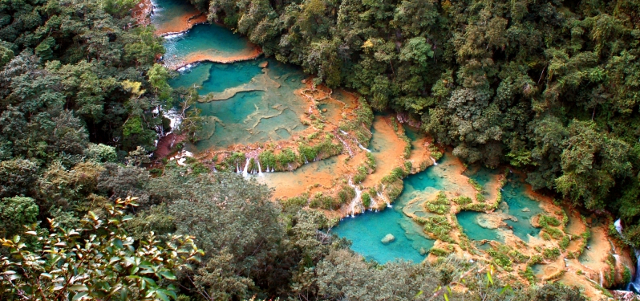Description
There are 25 mechanical wells with coverage of 96% of the population. In 2007, an assessment of the water situation in the municipality was conducted which established that the availability of groundwater has decreased significantly from 100 feet in the 70’s, to 700 feet in 2004. The conservation of the forest is of main importance to improve water recharge processes and guarantee water supply for the community. As the population is dispersed, water distribution and collection of money for provision services presents a challenge. Those homes with access to water distribution are connected via conduction tube lines, though many lack water meters.
Action taken
In Guatemala, Payment, for Environmental Services (CES) has been well-established as a strategy for conservation of forest ecological services, since it is part of a national Forest Policy supported by economic resources. The CES mechanism has been used as a strategic alternative that allow local people, stakeholders, and government to engage and establish social agreements for the conservation of natural resources.
The development of a hydrological CES in the Guatemalan municipality of San Juan Olintepeque started in 2012, by an initiative from the National Forest Institute and HELVETAS Swiss Cooperation, working with the support of several institutions such as Kim Tzu Pop, the Municipality of San Juan Olintepeque, The Nature Conservancy, and REDD/CCAD-Giz Program. Local communities were also involved and funding was from the Climate Nature and Communities consortium and the Fund for Tropical Forests. The activities were conducted under the Probosques program from the HELVETAS Swiss Cooperation, and though the Probosques program has ended, the CES mechanism is intended to be permanent.
The first steps taken were to conduct biological and hydrological surveys to analyze the benefits and services provided by the forest and their impact on the municipality. This information together with the Forest Management Plans (made as part of the PINFOR program) provided strong arguments to convince local communities and the municipalities about the importance of taking action to conserve, manage, and recover the municipal forest. Secondly, the CES mechanism was designed by INAB together with the institutions mentioned previously. It identified the water provider (municipal forest), water users, contributions to be made by the users according to their economical capacity, adding other funding coming from PINFOR incentives, and the organizational structure inside the mechanism.
Lessons learnt
- Ensuring community representation within the CES mechanism (such as through the COCODE’s, Water Committees, or from other kinds of existing community organization) is important to facilitate inclusive communication with local people and improve the CES outcomes.
- Establishing a political frame such as a Municipal Agreement is a key factor for assuring the continuity and sustainability of the CES.
- Having a continuous program of communication with environmental facts and success stories, even after the implementation of the CES, is important to achieve local people’s permanence inside the CES and help raise awareness
- Capacity building at all levels is necessary so the Coordination Board can generate support and advocacy from authorities, water beneficiaries, and the local people.

